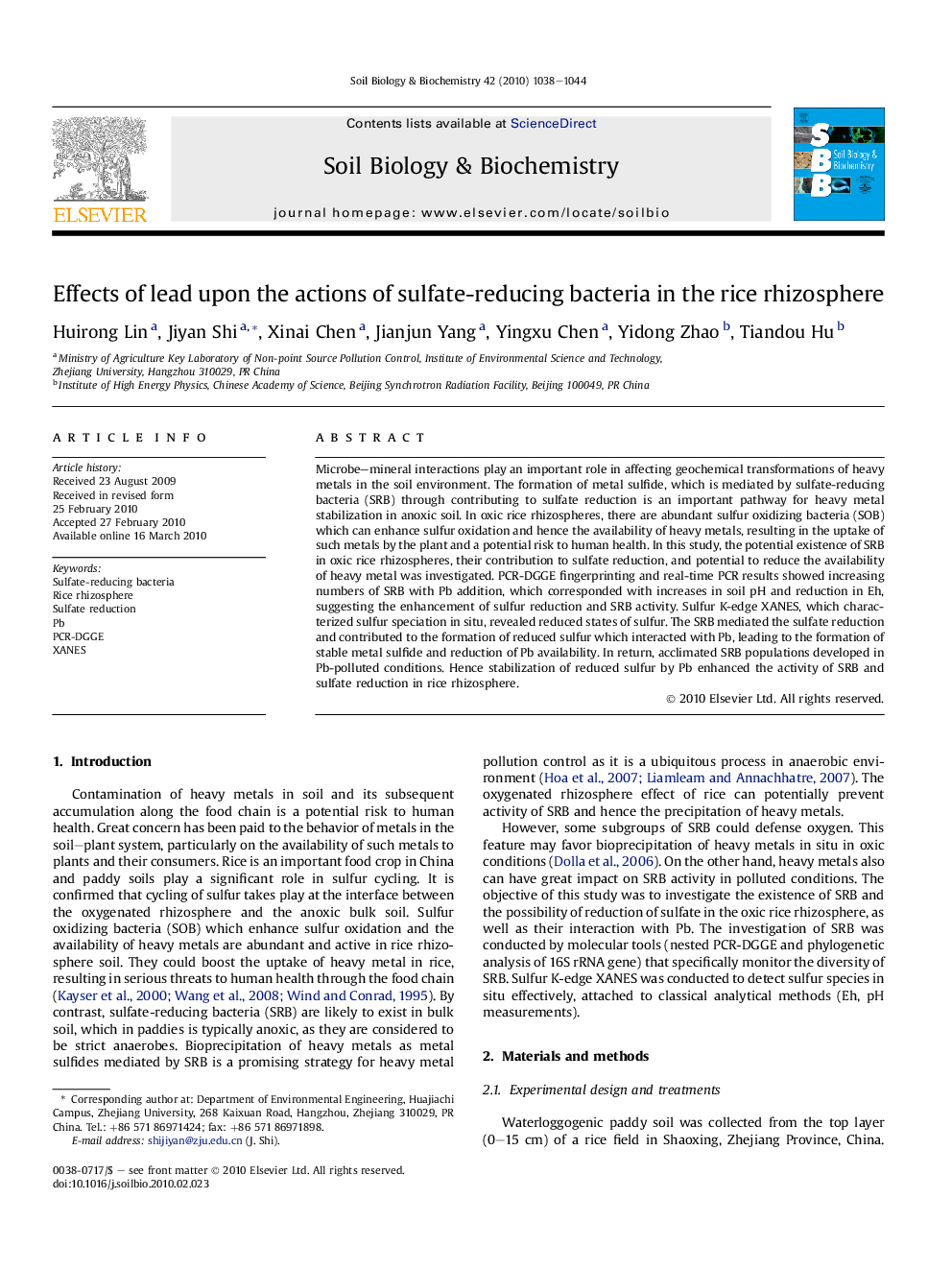| Article ID | Journal | Published Year | Pages | File Type |
|---|---|---|---|---|
| 2026261 | Soil Biology and Biochemistry | 2010 | 7 Pages |
Microbe–mineral interactions play an important role in affecting geochemical transformations of heavy metals in the soil environment. The formation of metal sulfide, which is mediated by sulfate-reducing bacteria (SRB) through contributing to sulfate reduction is an important pathway for heavy metal stabilization in anoxic soil. In oxic rice rhizospheres, there are abundant sulfur oxidizing bacteria (SOB) which can enhance sulfur oxidation and hence the availability of heavy metals, resulting in the uptake of such metals by the plant and a potential risk to human health. In this study, the potential existence of SRB in oxic rice rhizospheres, their contribution to sulfate reduction, and potential to reduce the availability of heavy metal was investigated. PCR-DGGE fingerprinting and real-time PCR results showed increasing numbers of SRB with Pb addition, which corresponded with increases in soil pH and reduction in Eh, suggesting the enhancement of sulfur reduction and SRB activity. Sulfur K-edge XANES, which characterized sulfur speciation in situ, revealed reduced states of sulfur. The SRB mediated the sulfate reduction and contributed to the formation of reduced sulfur which interacted with Pb, leading to the formation of stable metal sulfide and reduction of Pb availability. In return, acclimated SRB populations developed in Pb-polluted conditions. Hence stabilization of reduced sulfur by Pb enhanced the activity of SRB and sulfate reduction in rice rhizosphere.
